— Supercritical Decay
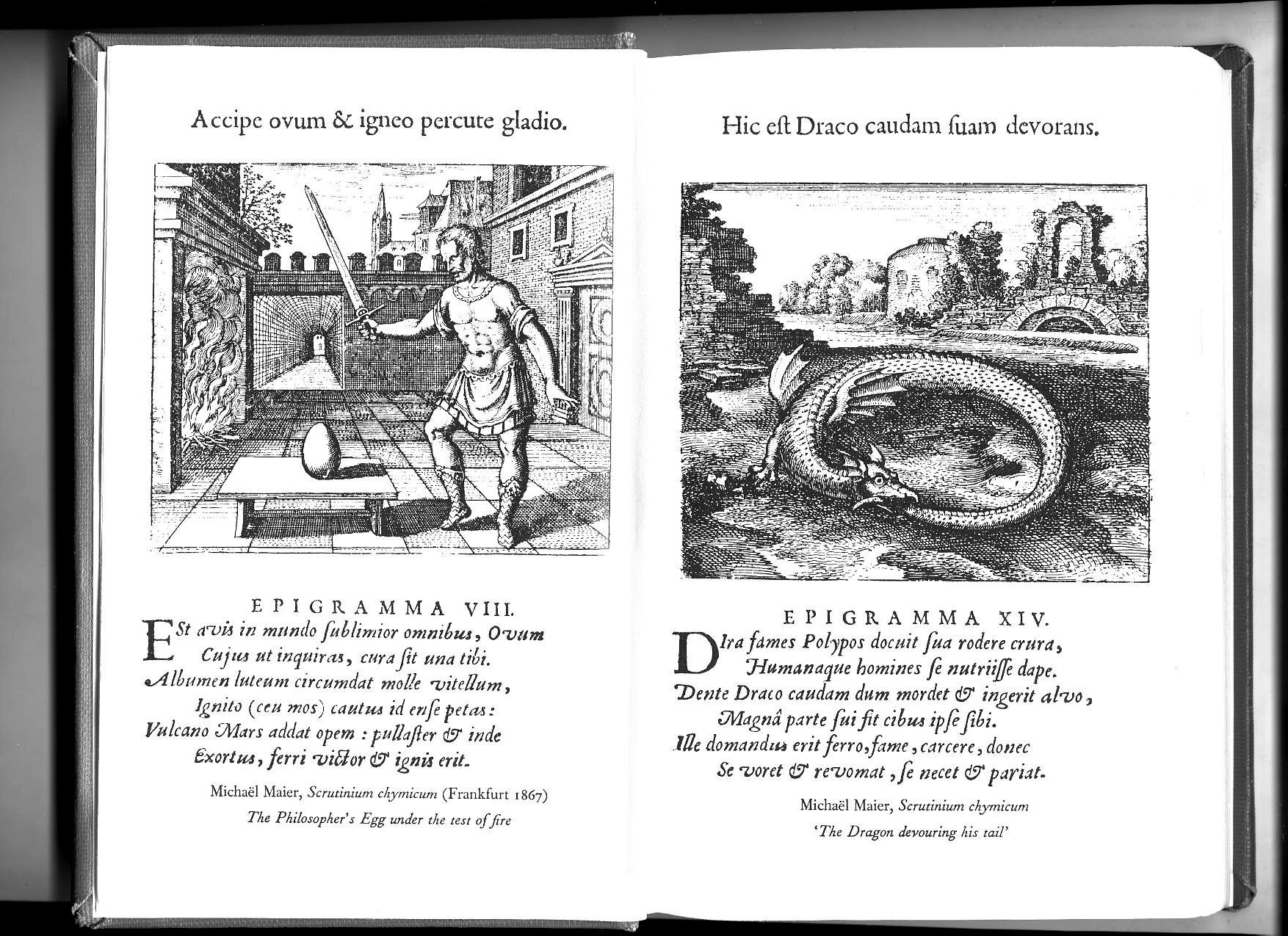
My anarchy obeys subterraneously a law in which I deal occultly with astronomy, mathematics and mechanics. And my hunger is fed by these putrefying beings in decomposition. My rite is a purifier of forces. But malignancy exists in the jungle. I swallow a mouthful of blood that fills me entirely. I hear cymbals and trumpets and tambourines that fill the air with noise and uproar drowning out the silence of the disc of the sun and its marvel. I want a cloak woven from threads of solar gold. The sun is the magical tension of the silence. On my journey to the mysteries I hear the carnivorous plant that laments times immemorial: and I have obscene nightmares beneath the sick winds. I am enchanted, seduced, transfixed by furtive voices. The almost unintelligible cuneiform inscriptions speak of how to conceive and give formulae about how to feed from the force of darkness. They speak of naked and crawling females. And the solar eclipse causes secret terror that nonetheless announces a splendor of heart.1Clarice Lispector, Água Viva, trans. Stefan Tobler (New York: New Directions, 1973/2012), 34–35.
1H
Approximately 4.567 billion years ago, the gravitational mass of a cluster of hydrogen atoms aggregated into a singular spot until it “went critical”—that is, when the atomic transmutation of single atoms of 1hydrogen were fused into the state of 4helium, releasing the byproduct of tremendous amounts of energy that we perceive as light from a star. Ever since, our solar body spirals entropically, terrestrial life enslaved to its decay.
UO2
In 1972, as a result of screening for missing fissile 235uranium in a mine operation in Olka, Gabon, scientists became aware that the missing element was not the outcome of a security breach—siphoning into the weapons black market—but was rather the result of a solitary event in the history of the Earth when natural fission brought about a lower concentration of the already rare but naturally occurring enriched uranium. Around 1.7 billion years ago, all the necessary factors converged for the first and last time to cause spontaneous fission: a saturated mix of rich uranium dioxide (UO2), oxygenated water, and a lack of rare earth elements. Such an event could not happen today because most of the naturally occurring, enriched 235uranium in the lithosphere has decayed over time into stable and non-fissile 238uranium. Beyond the fact of its beating Enrico Fermi to the first chain reaction on the planet, this geological phenomenon, posterior to the critical event, is an important case study for determining the “long-term geochemical behavior of radioactive wastes from nuclear reactors.”2E. D. Davis, C. R. Gould, and E. I. Sharapov, “Oklo reactors and implications for nuclear science,” International Journal of Modern Physics, vol. 23, no. 4 (2014).
14Carbon
I will call “arche-fossil” or “fossil-matter” not just materials indicating the traces of past life, according to the familiar sense of the term “fossil,” but materials indicating the existence of an ancestral reality or event; one that is anterior to terrestrial life. An arche-fossil thus designates the material support on the basis of which the experiments that yield estimates of ancestral phenomena proceed—for example, an isotope whose rate of radioactive decay we know, or the luminous emission of a star that informs us as to the date of its formation.3Quentin Meillassoux, After Finitude: An Essay on the Necessity of Contingency, trans. Ray Brassier (London: Bloomsbury Academic, 2010), 10.
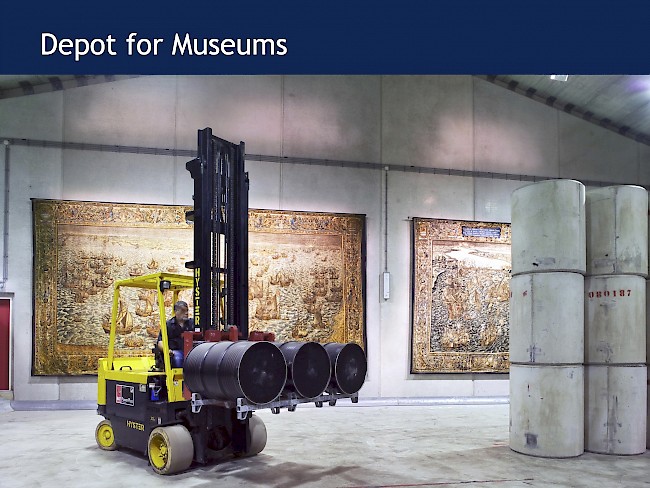
137Cesium
In the Netherlands, nuclear waste is stored in a purpose-built, aesthetically conscious facility called COVRA. Originally designed by artist William Verstraeten so that the façade of the architecture articulates the decay of the nuclear material inside, the color of the building is scheduled to spectrally shift from a vibrant orange to a washed white in synch with the radioactive levels as they transmute from dangerous to more benign over one hundred years. The antithesis to remote and deep storage refuges, such as the Svalbard Seed Vault in Norway, the COVRA’s facility is embedded in the community with an aggressive public relations agenda—hosting a diverse portfolio of radioactive waste isotopes (134cesium, 137cesium, 60cobalt, 99molybdenum, 90strontium, tritium, 238uranium, and so on). COVRA also exhibits in its education center the historic vial of radium that Marie Curie personally carried from Paris to Leiden for cold temperature experiments. The institution’s director—realizing radioactive storage is essentially time management—revamped the facility in 2008 to incorporate the deep storage of fine art objects from local museums such as tapestries, indigenous pottery, and artifacts.4COVRA Annual Report 2012, Jaarrapport 2012 →; Hans Codée and Ewoud Verhoef, “What’s the story?: Using art, stories and cultural heritage to preserve knowledge and memory,” OECD/NEA Conference: Constructing Memory, Verdun, France, September 15–17, 2014, PowerPoint file.
226Radium
Radithor was manufactured from 1925–30 at the Bailey Radium Laboratories, Inc. by the impresario “Dr.” William J. A. Bailey—not a medical doctor but a dropout from Harvard University whose only science class had been in geology. Radithor was one of many “homeopathic” therapies capitalizing on the radioactive element 226radium, which bubbled up from the excitement of Marie and Pierre Curie’s fin de siècle discovery of the high radioactivity of the mineral uraninite (formerly called pitchblende) and the rage surrounding destination sites such as Radium Hot Springs, British Columbia. Advertising for Bailey’s Radithor product included the taglines “A Cure for the Living Dead” and “Perpetual Sunshine.” Eben M. Byers, heir of the Byers steel industry empire during the roaring twenties, believed the hype that Radithor rejuvenated one’s organs and acted as an aphrodisiac. Not a man of measure, he drank the bourgeois elixir until his jaw literally dropped off from cancerous decay. He eventually died after consuming 1,400 bottles of Radithor and is buried at Allegheny Cemetery in Pittsburgh, Pennsylvania encased in a lead-lined coffin.5Cori Vanchieri, “Radiation Therapy Pursuit Leads to Unearthing of ‘Hot Bones,’” Journal of the National Cancer Institute, vol. 82 (21) (1990): 1667; “Death Stirs Action On Radium ‘Cures,’” New York Times, April 2, 1932; Robley D. Evans, “Radium Poisoning: A Review of Present Knowledge,” American Journal of Public Health and the Nation’s Health, vol. 23 (10) (1933); C. Prentiss Orr, “Eben M. Byers: The Effect of Gamma Rays on Amateur Golf, Modern Medicine and the FDA,” Allegheny Cemetery Heritage, Fall 2004; Ron Winslow, “The Radium Water Worked Fine until His Jaw Came Off,” Wall Street Journal, August 1, 1990; R. M. Macklis, “Radithor and the Era of Mild Radium Therapy,” Journal of the American Medical Association, 264 (5) (1990): 614–18.
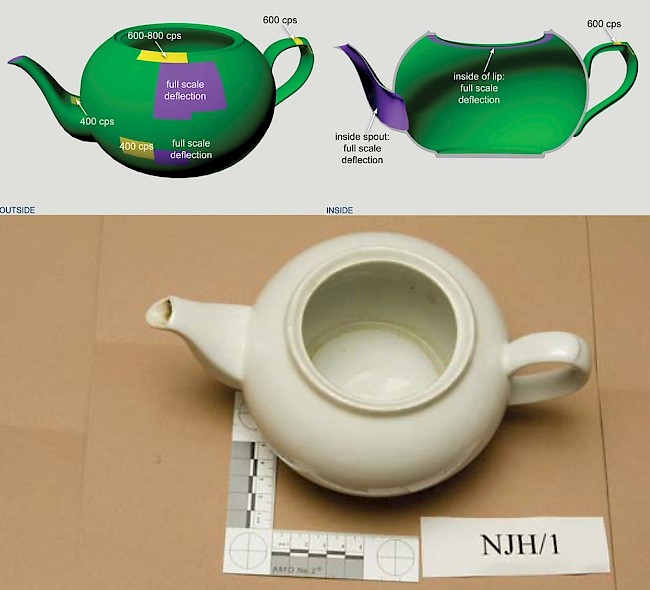
210Polonium
Polonium was the first radioactive element discovered by Marie and Pierre Curie. As the discovery occurred in 1898, Marie named the element after her homeland Poland, which at the time was split into various territories annexed by Russia, Germany, and the Austro-Hungarian Empire. 210Polonium was thus the first element in the periodic table named for political reasons. 210Polonium was also the dark heart, geopolitically and physically, of the first nuclear explosions: it was part of the “Gadget” explosive at the Trinity Site, New Mexico, as well as the “Fat Man” nuclear weapon that decimated Nagasaki in 1945. Surrounded by a 239plutonium shell (Pluto being the Greek god of the dead), the 210polonium trigger made sure the bomb went supercritical.
It was not until 2006 that 210polonium again appeared in the limelight (as part of another political controversy), this time due to the Russian Federation. In this case, the isotope appeared as an assassin’s poison, killing the former secret service FSB officer Alexander Litvinenko, who had defected to London and had become an informant for MI6 and a vocal critic of President Vladimir Putin. As the only 210polonium poisoning on record, the assassins most likely did not know that the technology existed to detect traces of the isotope. Normal forensic and security protocols detect gamma and beta radiation, but 210polonium only radiates alpha radiation. Thus, the killers could have simply traveled through airport security with the 210polonium encased in a vial of water without setting off radiation detectors. Initial medical tests also designed to look only for gamma radiation poisoning would have only produced a negative diagnosis. However, once 210polonium was deduced as the assassin’s poison, the forensic team was able to physically trace the rare isotope—using a similar method as tracking wildlife with isotopes—through the streets of London, determining that the poisoning dosage came from a pot of tea, that the 210polonium was originally taken from a nuclear reactor in Sarov, Russia, and that it finally returned to Russia with the alleged assassin, Andrey Lugovoy. Lugovoy then became a member of the Russian Parliament (pushing through a bill on internet censorship) and was therefore impossible to extradite to the UK, where there is currently a case underway before the High Court implicating Lugovoy for the murder of Litvinenko.6Keith A. Hobson, “Applying Isotopic Methods to Tracking Animal Movements,” Tracking Animal Migration with Stable Isotopes, ed. K. A. Hobson and L. I. Wassenaar (Amsterdam: Elsevier, 2008), 45–78; Terrance McKenna, “New details revealed about the poisioning of Russian dissident Alexander Litvinenko,” The National, CBC Television, April 6, 2015; Luke Harding, “Alexander Litvinenko inquiry: five more things we’ve learned,” The Guardian, February 27, 2015; Ambassador Craig Stapleton, “US Embassy Cable: A/S FRIED AND FRENCH NSA-EQUIVALENT,” December 12, 2006, reprinted in The Guardian, December 1, 2010; Roland E. Langford, Introduction to Weapons of Mass Destruction: Radiological, Chemical, and Biological (Hoboken, NJ: John Wiley & Sons, 2004), 84.
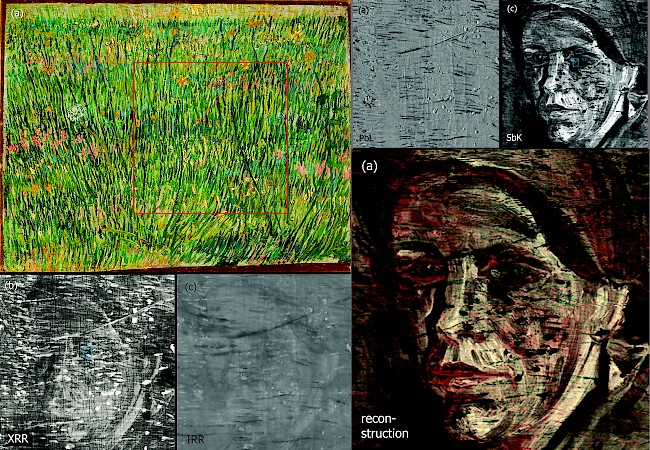
147Promethium
It must be said that after the night of December ’88 … Van Gogh began to give to the sun a meaning which it had not yet had … At that moment all of his painting finally became radiation, explosion, flame, and himself, lost in ecstasy before a source of radiant life, exploding, inflamed. When this solar dance began, all at once nature itself was shaken, plants burst into flame, and the earth rippled like a swift sea, or burst; of the stability at the foundation of things nothing remained. Death appeared in a sort of transparency, like the sun through the blood of a living hand, in the interstices of the bones outlined in the darkness.7George Bataille, “Van Gogh as Prometheus (1937),” October 36 (Spring 1986): 59.
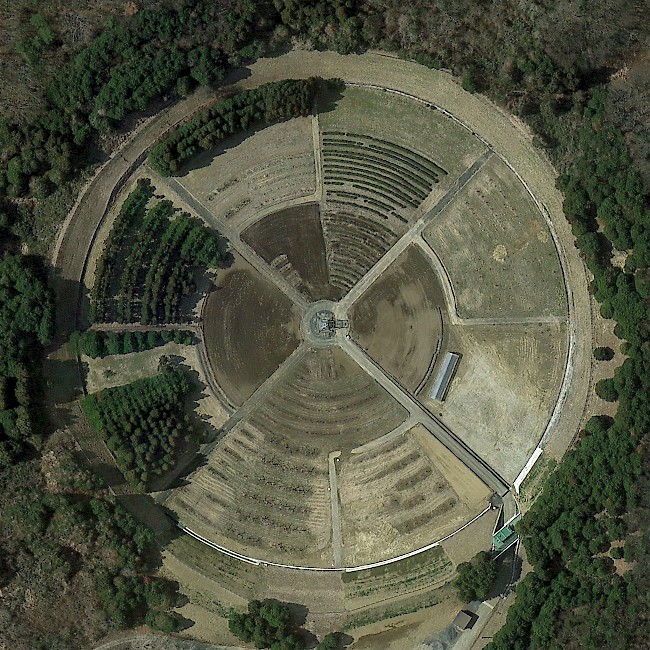
60Cobalt
The engine of evolution—genetic mutation—occurs randomly in nature. Scientists since the 1950s have accelerated evolution by exposing plants to 60cobalt. Typically, 60cobalt is used in the more extreme situations of industrial and architectural radiography, when dense infrastructures require extreme blasts of gamma radiation for penetration. But as the curators of the Center for PostNatural History in Pittsburgh have pointed out, there are different uses in locations such as the Radiation Breeding Gamma Field in Ibaraki, Japan, where the radioactive isotope is placed at the center of a 650-foot-wide field and left to mutate various crops. The results: thousands of new species that are more adaptive to extreme climates or attractive to consumer desires—from Calrose 76 rice to Star Ruby grapefruit to Golden Promise barley for Scotch whiskey.8 William J. Broad, “Useful Mutants, Bred with Radiation,” New York Times, August 28, 2007; Richard W. Pell and Lauren B. Allen, “Preface to a Genealogy of the Postnatural,” Land & Animal & Nonaminal, ed. Anna-Sophie Springer and Etienne Turpin, intercalations series (Berlin and Toronto: K. Verlag and Haus der Kulturen der Welt, 2015).
UO2
Under the code name “Operation McCall,” the US Pentagon brokered a financial transaction and secret transport of uranium oxide (UO2), also known as yellowcake. The US military hauled the yellowcake from a bombed nuclear reactor site outside Baghdad to a processing facility just outside Toronto. Not weapons-grade uranium—but still radioactive and a potential nuclear fuel—the 550 kilograms were sold to the private corporation Cameco for the secret bid of $90.37 million. The purchased yellowcake was not the Nigerian yellowcake falsely addressed by President Bush in his 2003 State of the Union speech, but originated from the domestic Iraqi mine Ukashat. The yellowcake had been tracked by the International Atomic Energy Agency from before Israel first bombed the reactor site in 1981. Cameco has a long history of dealing with the US government, both in buying and selling: from proxy-acquiring decommissioned Russian nuclear warheads to providing the greatest import of nuclear fuel to America.9“Iraqi uranium removed to Canada,” World Nuclear News, July 8, 2008 →; US Embassy of Iraq/Department of Energy, “Subject: Tuwaitha Yellow Cake Sale Negotiations Update,” Ambassador Charles Ries, Canonical ID: 08BAGHDAD845_a. Baghdad, Iraq, March 20, 2008; Telegram (cable), published by Wikileaks; Brianna Keilar and Larry Shaughnessy, “500 tons of uranium shipped from Iraq, Pentagon says,” CNN, July 7, 2008 →; Andy Hoffman, “A chain reaction that put Iraq’s nuclear hoard in Canada’s hands,” Globe and Mail, July 8, 2008 →; Alissa Rubin and Campbell Robertson, “U.S. Helps Remove Uranium From Iraq,” New York Times, July 7, 2008 →
U3O8
Jim Doak, television personality and chairman of the mining company Khan Resources, was found dead at the age of fifty-nine on the sixteenth floor of his hotel room in Ulaanbaatar, Mongolia. Kahn Resources is a Canadian corporation based out of Toronto that initially had the controlling majority in Central Asian Uranium Co. Ltd. (CAUC), which was created to extract uranium ore (U3O8) from the Dornod region of Mongolia. CAUC, like its commodity interest, is a nested atom: Khan owned 58 percent, JSC Priargunsky from Russia owned 21 percent, and MonAtom from Mongolia owned 21 percent. Deep in the contracts and records, we find that JSC Priargunsky is 89 percent controlled by Atomredmetzoloto (AMRZ), and, like a Babushka doll, 76 percent of ARMZ is controlled by Rosatom State Corporation, which is the “Russian Federation national nuclear corporation bringing together circa 400 nuclear companies and R&D institutions that operate in the civilian and defense sectors.” MonAtom is directly controlled by the government of Mongolia.
While mining in the Dornod sector was initially developed in the 1950s by the USSR, as the union decayed into different nation-states Russia finally stopped mining by 1995, and the one open pit mine has remained flooded ever since. In the late 1990s, at the behest of the Mongolian government, Canadian private corporate interests renewed prospecting and feasibility studies. Khan Resources’s IPO on the Toronto Stock Exchange in 2006 was bolstered with exploration licenses, newly found deposits, and an extraction schedule, but by 2009–10, the Mongolian government canceled the licenses and rewrote national legislation expropriating foreign controlled interests without recompense. In tandem, the original Russian and Mongol state actors struck a new joint venture for uranium mining in the country—effectively preventing Khan Resources from profiting from the Dornod region. Despite a failure in the Supreme Court in Canada to sue Russia, an International Tribunal ruling on international trade agreements (signed by both Canada and Mongolia) awarded 104 million dollars to Khan Resources, payable by the government of Mongolia, for illegally seizing Khan’s investment. In the spring of 2015, Jim Doak traveled to Ulaanbaatar to negotiate with the government about the payment, but after two days of unsuccessful lobbying, Khan Resources announced via a press release that it had secured the “services of a specialist who collects delinquent government debts by seizing assets, such as airplanes or ships temporarily located outside the country.” Jim Doak, while waiting to catch a flight back to Canada, did not wake up in his hotel the day after the announcement.10For the Khan Resources press release, see →; “Jim Doak, Canadian mining executive, found dead in Mongolia,” CBC News, April 23, 2015; “Хан ресурсын дарга Монголд нас баржээ,” News Agency, April 23, 2015 →; “Uranium in Mongolia,” World Nuclear Association, March 16, 2015 →
99mTechnetium
X-ray images have haunted us for over a century, starting with the hand of Wilhelm Röntgen’s wife in 1895, which provided the first experience of seeing into the body without incision: like the sun through the blood of a living hand, in the interstices of the bones outlined in the darkness. Contemporary images produced using computer tomography, fluoroscopy, and radiography continue the same process of using high-voltage electrical currents to radiate gamma rays that pass through the body. Injecting radioactive isotopes is another form of internal visualization, but the procedure is done using nuclear tracers that enter the body and radiate from the inside out. The first ever artificially made element was technetium, a class of isotopes produced in 1937. 99mTechnetium accounts for 80 percent of the use of nuclear medicine, including diagnostic strategies for bone scans and functional brain scans, as well as liver, respiratory, renal, and thyroid procedures. The unstable element is created first by the production of 99molybdenum, which has a longer half-life optimized for transport, and which is forcibly transmuted, or “moly milked,” on site for dosage as the shorter-lived 99mtechnetium. One third of the world’s 99mtechnetium supply is created in Ontario, Canada at the Chalk River Nuclear Reactor, the site of the first nuclear plant outside of the US, which played an important role in the Manhattan Project and as supplier of 210plutonium to the American nuclear weapons program from 1955 to ’76.11Food and Drug Administration →; “Radioisotopes in Medicine,” World Nuclear Association, updated April 2015 →; “Chalk River makes 1st isotopes in 15 months,” CBC News, August 18, 2010.
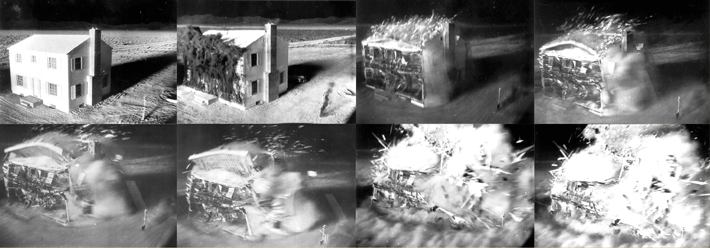
239Plutonium
It is technology that demands us to think in another way than what is usually understood as “essence.” But in what way? When we speak of the “essence of a house” or the “essence of a state,” we do not mean a generic type; rather, we mean the ways in which house and state hold sway, administer themselves, develop, and decay … Yet the more we question the essence of technology, the more mysterious the essence of art becomes.12 Martin Heidegger, “The Question Concerning Technology,” Basic Writings (1954), ed. David Farrell Krell, trans. William Lovitt (New York: Harper & Row, 1977), 311–12.
235Uranium
In the current debate as to where/when to pound the official golden spike in a particular global geological stratum to define the beginning of the Anthropocene epoch, two outer limits have been delineated: the first is the crossing of the Atlantic Ocean and the start of the Columbian Exchange due to colonialism, while the second is the first nuclear explosion. Both of these events were precipitated by Italian “explorers”: Christopher Columbus in 1492 and Enrico Fermi in 1942. The latter occurred on the shores of the Great Lakes in North America at a site called the Chicago Pile-1 on December 2, 1942. Here, Fermi initiated the first artificial nuclear chain reaction in scientific history, sub rosa, the Manhattan Project, and at exactly 3:25 p.m., under the university football stadium, the pile “went critical,” in this case meaning it reached a self-sustaining reaction. After the experiment was observed, Arthur Compton, head of the laboratory, telephoned James Conant, chairman of the National Defense Research Committee. Fully conscious that atomic weaponry was the next phase of their work, the men’s conversation (relayed in impromptu code) possessed a perverse irony. Referencing a historic colonial scenario, they coded the success of an experiment that would lead to the dawn of the new colonial era:
Compton: The Italian navigator has landed in the New World.
Conant: How were the natives?
Compton: Very friendly.13Simon L. Lewis and Mark A. Maslin, “Defining the Anthropocene,” Nature 519 (March 12, 2015): 174; Corbin Allardice and Edward R. Trapnell, “The First Pile” (1946), International Atomic Energy Agency Bulletin, vol. 4, no. 0 (1962); Elizabeth DeLoughrey, “Heliotropes: Solar Ecologies and Pacific Radiations,” in Postcolonial Ecologies: Literatures of the Environment, ed. Elizabeth DeLoughrey and George B. Handley (Oxford: Oxford University Press, 2011).
×


